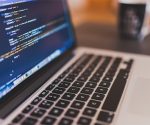Digital Access Codes Contribute to High Textbook Prices
Digital study tools may be convenient, but they can prove to be a significant added cost for university students. Often, the tools are needed to complete homework tasks but require a single-use access code that cannot be purchased at a discount like used textbooks can.
Information on this expensive trend comes from the Student Public Interest Research Groups (Student PIRGs), state-based groups that advocate for causes like more affordable textbooks.
The serial numbers can be used to access online materials like books, study guides, homework assignments, quizzes, and tests. Mostly, students buy them because their instructors require them, reports Ann Carrns of the New York Times.
Nicole Allen, director of open education at the Scholarly Publishing and Academic Resources coalition, said:
“They’re the next frontier in the textbook affordability battle.”
Sometimes the students are forced to purchase a new textbook alongside the code. According to the report, the average cost of just an access code purchase from the campus bookstore is $ 100. When bundled with a textbook, the average cost is $ 126, reports Laura Northrup of the Consumerist.
Out of the ten schools the report analyzed, about a third of their current courses require access codes.
Ethan Senack, Higher Education Advocate at Student PIRGs, said:
“Online access codes are the new face of the textbook monopoly. In one swoop, the publishers remove a student’s ability to opt out of buying their product, eliminate any and all competition in the market.
“[Access codes] are just another tactic to eliminate competition in the market and keep profits high. These codes offer big publishers a host of benefits over the traditional print market– while throwing students, especially those who are economically disadvantaged, under the bus.”
The analysis looked at only ten schools, but there was considerable variety among them — for example, private four-year colleges, public universities, and community colleges. This is, according to Senack, an accurate snapshot of what students around the country might expect.
These digital access codes are just adding to the already oppressive price of textbooks, many believe.
The average student budget for textbooks and supplies at a private, nonprofit four-year college, according to the College Board, was $ 1,249 for the 2015-2016 school year.
50% of students report that textbook prices impact both which and how many courses they can take, reports Robert Hansen of the American River Current.
According to a report in August from the Bureau of Labor Statistics, textbook costs have risen 88% over the past ten years, which is significantly more than the 63% tuition increase over the same period.
Even though textbook costs have risen significantly, the National Association of College Stores says that student spending has been flat or declining. This is due to cost-saving measures like buying used textbooks, sharing textbooks, or renting. Two-thirds of students skip buying textbooks altogether because of the cost, even though 94% of them recognized that this would impact their grade. Also, many people are now promoting open-source textbooks, which are available online for free.
However, requiring digital access codes prevents students from using many of these cost-saving measures.
According to Jacqueline Ingles of ABC Action News, students are prevented from selling back the codes, or even from making use of them after the semester ends. Jessica Fast of USF said:
“You get to use it for a semester and then usually you get locked out like after the semester ends, so you don’t have it anymore.”
Author information
The post Digital Access Codes Contribute to High Textbook Prices appeared first on Education News.









Comments are closed.